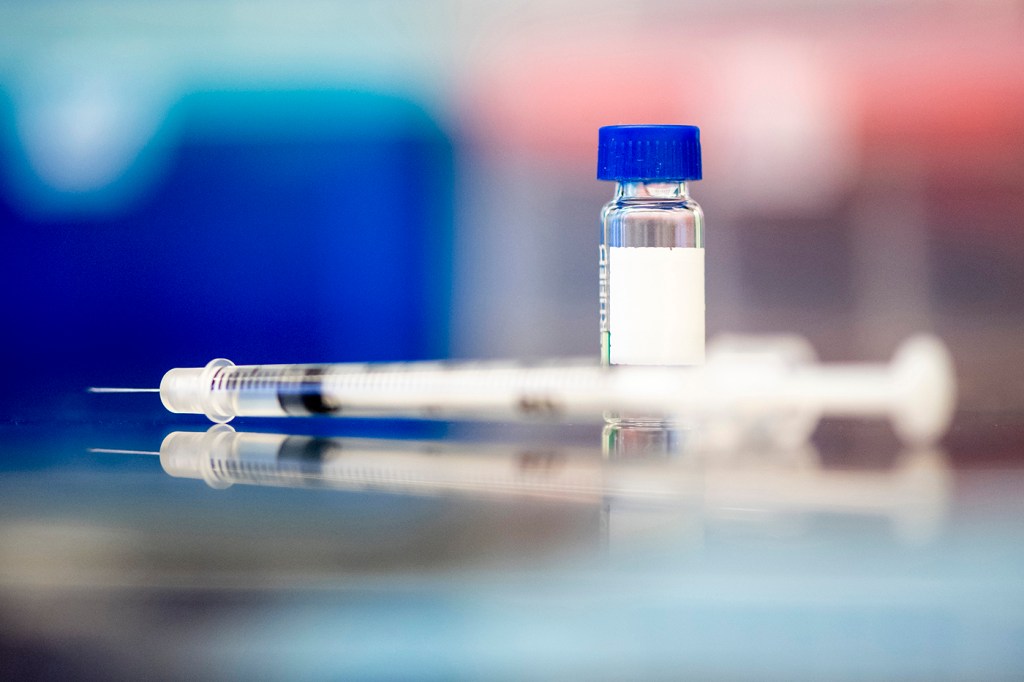COVID-19 vaccines like Pfizer’s and Moderna’s could revolutionize medicine far beyond the pandemic

The pharmaceutical company Moderna announced on Monday that its coronavirus vaccine was 94.5 percent effective at preventing COVID-19 during a preliminary large-scale trial. The statement comes a week after Pfizer announced its vaccine was more than 90 percent effective during clinical trials, putting the two drugmakers neck and neck in the global race to develop an immunization to quell the pandemic.

Mansoor Amiji is a Northeastern distinguished professor of pharmaceutical sciences and chemical engineering. Photo by Matthew Modoono/Northeastern University
Not only are these vaccines among the first to prevent COVID-19, but they do so by using a new type of technique involving messenger RNA—a method that, if approved by the Food and Drug Administration as expected, could revolutionize medicine well beyond the pandemic, says Mansoor Amiji, university distinguished professor of pharmaceutical sciences and chemical engineering at Northeastern.
“These strategies Moderna and Pfizer are applying for the vaccine could also be useful for developing drug therapy in the future as well,” he says.
What makes these vaccines different?
Typically, vaccines can create immunity when either an inactive version of the pathogen or isolated components of a pathogen are introduced to the body. In either case, enough of the pathogen is present to stimulate an immune response without causing full-blown disease.
But this technique can be risky, as not all disease-causing particles are guaranteed to be inactive, Amiji says. Plus, this type of vaccine usually takes years to develop.
In contrast, the messenger RNA, or mRNA, vaccine doesn’t use inactive bacterial or viral material to create immunity. Instead, the mRNA vaccine for COVID-19 enables cells to produce proteins that mimic parts of the SARS-CoV-2 molecule, triggering the immune response without the virus.
During infection, spike-like proteins on the surface of the SARS-CoV-2 molecule puncture healthy cells, creating an entry point for the virus’s genetic material to flood the host cells and replicate. The presence of these spike proteins activates the immune system even when they are isolated from the SARS-CoV-2 molecule, as they are in the vaccine.
What role does mRNA play?
Messenger RNA gives cells instructions on how to create proteins. In an mRNA vaccine, the messenger RNA contains the code for the spike, which the viral cell uses to produce the spear-like protein.
The vaccine delivers mRNA to healthy cells in “soap-like bubbles” or nanoparticles made of lipids, Amiji says. Once the bubbles are captured by the cells, the mRNA attaches to the cells’s protein-producing machinery and gives the commands.
The vaccine is administered into the patient’s muscles, usually in the arm. The muscle cells produce the spike proteins, and then immune cells located beneath the muscle “recognize the new entity in the body and create a defense against it,” Amiji says.
Not only does the immune system defend healthy cells from the spike protein, but it also becomes trained to kill any infected cells. “The immune cells become little soldiers that seek out infected cells and destroy them,” Amiji says.
This reaction, called cellular immunity, is an added bonus of the mRNA vaccine. Most other vaccines produce humoral immunity, which merely prevents the virus from spreading further once infection occurs, says Amiji.
Another possible benefit of the mRNA vaccine is its short lifespan. “It creates the spike proteins for a short amount of time, educates the body on how to protect against them, and then the spike proteins and the mRNA clears out,” Amiji says. “You’re not going to have residual spike proteins floating around in the body long afterwards.”
This might require more frequent doses of the vaccine—Moderna’s vaccine would require two shots spaced one month apart, while Pfizer’s would require two shots spaced three weeks apart. But on the other hand, a shorter lifespan could reduce the risk of unknown long-term complications from leftover proteins. It might also prevent the body from becoming accustomed to the spikes, which would weaken the immune system’s defense against them in the future, Amiji explains.
What’s next for Moderna and Pfizer?
Neither company’s trial results have been peer reviewed by members of the science or medical communities. But in the next few weeks, both companies plan to apply for emergency use authorization from the FDA to start vaccinating high-risk members of the public.
The FDA, which stated a vaccine would need to be at least 50 percent effective to be approved, is expected to authorize Moderna’s and Pfizer’s vaccines for emergency use, a step that could pave the way for other types of drug therapy beyond coronavirus.
“With this, we can envision a therapy that uses mRNA to treat Alzheimer’s, to treat Parkinson’s, to treat cancer,” Amiji says. “It’s not limited to coronavirus vaccines or other infectious disease vaccines. Now we can ask ourselves: What else can mRNA be used for?”
For media inquiries, please contact media@northeastern.edu.





